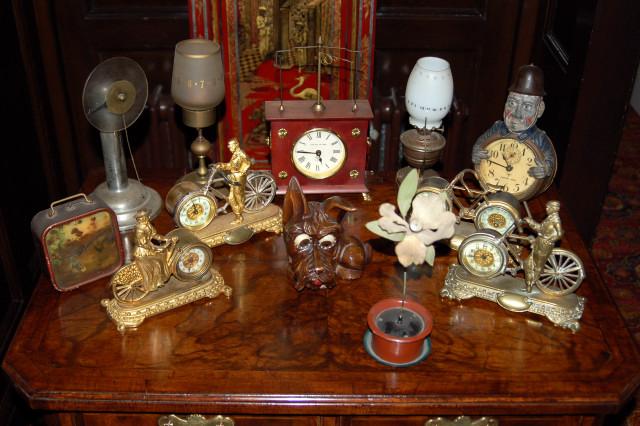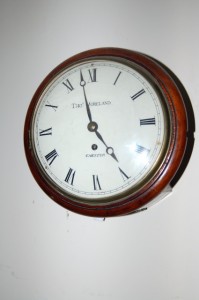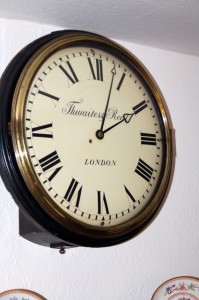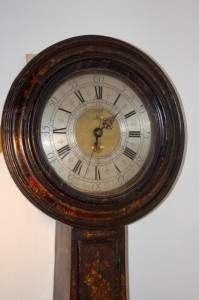I get asked many times about what I would choose if I was starting a collection of antique grandfather clocks. We feel privileged in helping many special customers and friends source their own private antique clock collections. The most important part if you are deciding to build your own antique clock collection is to purchase them somewhere you can get a guarantee they are genuine. I would also take you time in building up this collection, it can not be achieved overnight.
What type of clocks to collect?
I believe the greatest antique grandfather clocks were produced between C1680 and C1820. I am now going to suggest a possible date and styles that you could choose to form this collection. It is true you might prefer a particular style of antique clock and then you could just collect this style. There is nothing wrong in doing this. You may prefer just famous London makers from the 17th and early 18th centuries like Thomas Thompion or Edward East or George Graham. I have no problem in collectors heading down this route.
Broad spectrum of clocks
A route I will suggest here is a broad spectrum of special antique clocks from the entire range of the period suggested above. The collection could be increased still further from what is listed below by different dial shapes or antique clocks from different towns also showing distinctive case features.
Examples of Interest
1)
I think it is important to start your collection with a special early example of a London marquetry brass square dial grandfather clock by a reknowned but not necessary ultra famous maker. This clock will date from around C1690 and be a good ‘8-day’ example, usually with a lentical to the trunk door.
2)
I think next on the list would be a good ‘8-day’ or ‘month’ duration English burr walnut square brass dial grandfather clock, again by a good London clockmaker.
3)
I think it is then important to source a good arch or square brass dial early lacquer clock from C1715. This again will be a London area example.
4)
A burr-walnut arched brass dial caddy top London grandfather clock is also essential to any collection. These tend to date from C1715 to C1750.
5)
A good early arched or square brass dial provincial oak grandfather clock should form part of any collection. These dating from early to mid 18th century. These will be good ‘8-day’ examples with maybe an early ‘penny’ moon feature or automaton to the arch or dial centre.
The clocks do not have to cost the earth.
6)
An early oak or maybe pine 30 hour duration clock with brass square dial would be nice in any collection.
7)
Moving on to my favourite period in antique clocks from C1760 onwards. A good C1770 London mahogany arched brass dial is vital.
8
A superb London mahogany arch white dial ‘8-day’ grandfather clock.
9)/10)11)
Moon examples of 7 and 8 are also important to any collection, as is an automaton example.
12)
A good Manchester moonphase grandfather clock from around C1770
13)
A typical Liverpool moonphase grandfather clock from around C1770
14)
A typical Bristol tidal times moonphase mahogany grandfather clocks from around C1770
15)
A typical Hull pagoda top mahogany grandfather clock from around C1770/C1790
16)
A good Edinburgh grandfather clock from the end of the 18th century
17)
A good white dial Dundee or thereabouts mhaogany arch dial grandfather clock from C1790
18)
A good London with attached hood columns arched brass dial mahogany grandfather clock.
19)
A good London with attached hood columns square silvered brass dial mahogany grandfather clock.
20)
Various Precision Regulator examples with the differing means of pendulum compensation.
Conclusion
I have tried to form the basis of a wide ranging collection This could be a good tool for you to start building your own antique clock collection. Clearly there are some great clocks from other provincial towns around the country that I have not mentioned. You can also throw in some special provincial makers like Barber or Ogden or Deacon to the mix. I suppose a wide ranging collection should encompace as many differing cabinet styles from all the areas of the UK. These may also include one from the west coast of Scotland, or Ireland, even though I am not a big fan of the typical 18th century case styles from the these areas. This is just a personal taste though and one clock from each place as an example would not be out of place in any collection. I suppose this depends on space and finance though. I believe a minimum of 25 grandfather clocks would be required to be purchased to obtain a good overall wide ranging collection. This can then be bulked out if necessary be adding more towns or special collectible makers. Clock collecting can be quite addictive.
– Daniel Clements – Pendulum of Mayfair Ltd 51 Maddox street, London –
























